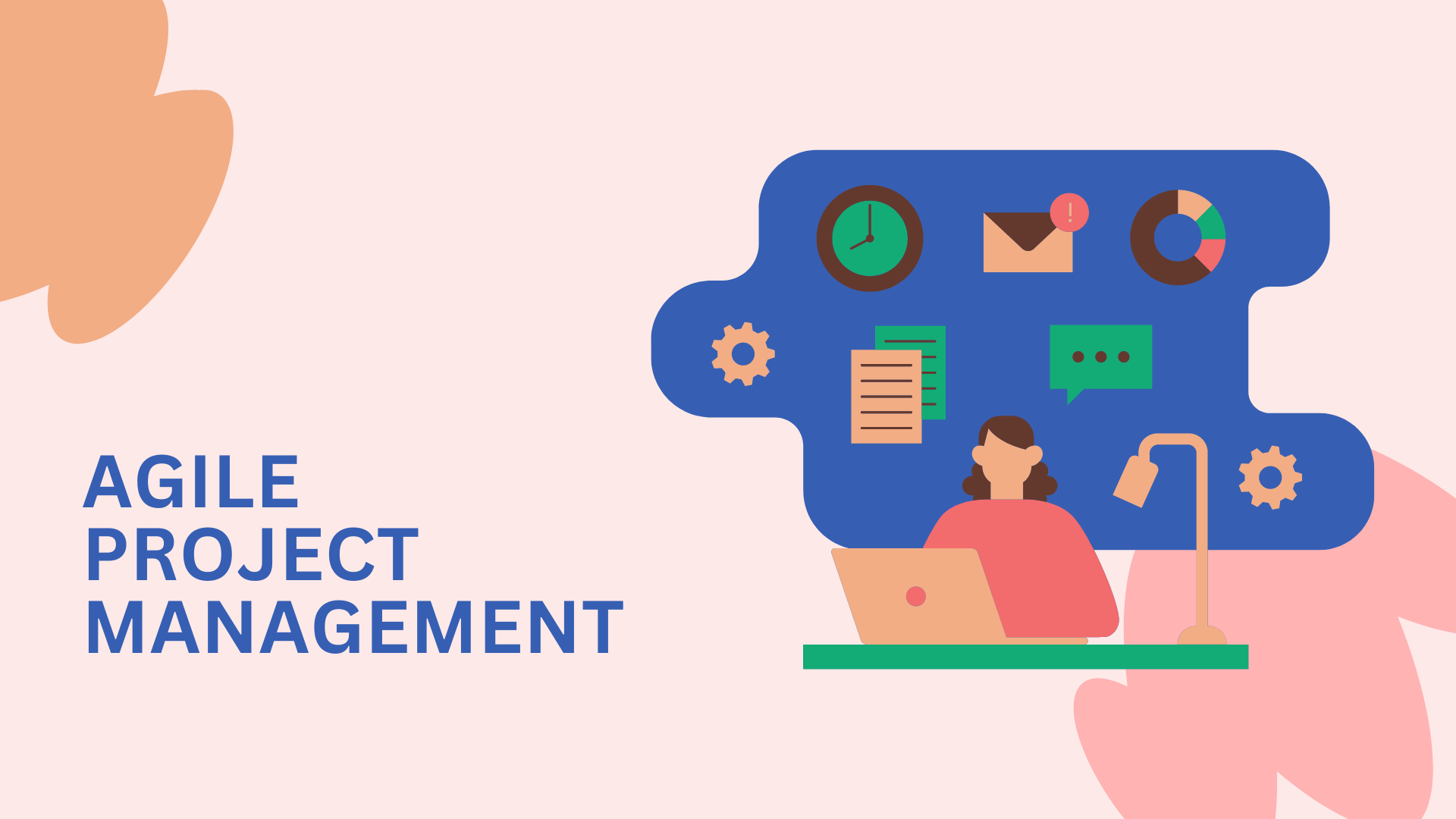What Is Agile Project Management
Agile project management is an approach to software development that emphasizes flexibility, collaboration, and customer satisfaction. Unlike traditional project management methods, Agile focuses on iterative progress through small, manageable increments, allowing teams to adapt quickly to changes and continuously improve their processes.
Definition and Principles of Agile
Agile project management is defined by its iterative and incremental nature, where projects are broken down into small, deliverable parts known as iterations or sprints. Each iteration results in a working product increment, which can be reviewed and tested by stakeholders. This approach ensures that the project is continuously aligned with customer needs and can adapt to changes swiftly.
The core principles of Agile project management are outlined in the Agile Manifesto, which serves as the foundation for all Agile methodologies. The Agile Manifesto emphasizes four key values:
- Individuals and interactions over processes and tools: Agile methodologies prioritize people and their interactions, fostering a collaborative environment where team members work closely together to achieve project goals.
- Working software over comprehensive documentation: The primary measure of progress in Agile is working software. While documentation is still important, it should not overshadow the importance of delivering functional software.
- Customer collaboration over contract negotiation: Agile encourages continuous collaboration with customers and stakeholders, ensuring that their feedback is incorporated throughout the development process.
- Responding to change over following a plan: Agile methodologies are designed to be flexible and adaptive, allowing teams to respond to changes in requirements or market conditions promptly.
The Agile Manifesto and Its Significance
The Agile Manifesto, created in 2001 by a group of 17 software developers, is a declaration of the core values and principles that guide Agile methodologies. In addition to the four values, the Agile Manifesto includes 12 principles that further define the Agile approach:
- Our highest priority is to satisfy the customer through early and continuous delivery of valuable software.
- Welcome changing requirements, even late in development. Agile processes harness change for the customer's competitive advantage.
- Deliver working software frequently, from a couple of weeks to a couple of months, with a preference to the shorter timescale.
- Business people and developers must work together daily throughout the project.
- Build projects around motivated individuals. Give them the environment and support they need, and trust them to get the job done.
- The most efficient and effective method of conveying information to and within a development team is face-to-face conversation.
- Working software is the primary measure of progress.
- Agile processes promote sustainable development. The sponsors, developers, and users should be able to maintain a constant pace indefinitely.
- Continuous attention to technical excellence and good design enhances agility.
- Simplicity—the art of maximizing the amount of work not done—is essential.
- The best architectures, requirements, and designs emerge from self-organizing teams.
- At regular intervals, the team reflects on how to become more effective, then tunes and adjusts its behavior accordingly.
Benefits of Agile Methodologies in Software Development
Agile methodologies offer numerous benefits that make them well-suited for modern software development:
- Enhanced Flexibility and Adaptability: Agile's iterative approach allows teams to quickly adapt to changing requirements and market conditions, ensuring that the final product meets customer needs.
- Improved Product Quality: Frequent testing and continuous feedback help identify and address issues early, resulting in higher-quality software.
- Increased Customer Satisfaction: Continuous collaboration with customers ensures that their feedback is incorporated throughout the development process, leading to a product that better meets their expectations.
- Better Project Control and Risk Management: The iterative nature of Agile allows for regular progress reviews and adjustments, providing better control over the project and reducing risks.
By embracing the principles and values of Agile project management, teams can create a more dynamic, collaborative, and customer-focused development process that delivers high-quality software efficiently.
Popular Agile Methodologies
Agile project management encompasses a variety of methodologies, each with its unique approach to achieving Agile principles. Among the most popular are Scrum, Kanban, Lean Software Development, and Extreme Programming (XP). Let's explore these methodologies, starting with Scrum.
Scrum
Scrum is an Agile framework that enables teams to work collaboratively and iteratively to deliver high-quality software. It is structured around fixed-length iterations called sprints, which typically last two to four weeks. Each sprint aims to produce a potentially shippable product increment.
Roles in Scrum:
- Product Owner: The Product Owner is responsible for defining the features of the product and prioritizing the Product Backlog. They ensure that the team is working on the most valuable features and act as the primary liaison between the team and stakeholders.
- Scrum Master: The Scrum Master facilitates the Scrum process, helps the team adhere to Scrum practices, and removes any impediments that might hinder the team's progress. They also ensure that communication flows smoothly between the team members and stakeholders.
- Development Team: The Development Team consists of professionals who do the actual work of delivering the product increment. They are self-organizing, cross-functional, and collectively responsible for the success of each sprint.
Scrum Artifacts
- Product Backlog: A dynamic list of features, enhancements, and bug fixes that are prioritized by the Product Owner. It serves as the single source of work for the team.
- Sprint Backlog: A subset of the Product Backlog selected for a specific sprint, along with a plan for delivering the product increment and achieving the sprint goal.
- Increment: The sum of all the Product Backlog items completed during a sprint, along with the increments of all previous sprints. It must be in a usable condition and meet the team's Definition of Done.
Key Events
- Sprint Planning: A meeting where the team and Product Owner collaborate to decide what work will be performed during the upcoming sprint. They create the Sprint Backlog and define the sprint goal.
- Daily Scrum: A short, time-boxed meeting (usually 15 minutes) where the Development Team synchronizes their work and plans for the next 24 hours. Team members answer three questions: What did I do yesterday? What will I do today? Are there any impediments in my way?
- Sprint Review: Held at the end of the sprint, this meeting involves the team presenting the product increment to stakeholders for feedback. The Product Backlog may be adjusted based on this feedback.
- Sprint Retrospective: A meeting where the team reflects on the sprint that just ended and identifies ways to improve processes and performance in the next sprint.
Benefits and Challenges of Using Scrum
- Benefits:
- High Productivity: Regular sprints and clear goals keep the team focused and productive.
- Clear Roles and Responsibilities: Defined roles help streamline communication and decision-making.
- Frequent Feedback: Regular reviews and retrospectives ensure continuous improvement and stakeholder satisfaction.
- Transparency and Visibility: Daily scrums and sprint reviews provide regular updates on progress and challenges.
- Challenges:
- Scope Creep: Without careful management, the scope of a project can expand beyond initial plans.
- Dependence on Scrum Master: Teams can become overly reliant on the Scrum Master to resolve issues.
- Time Commitment: Daily meetings and frequent reviews require a significant time investment.
- Learning Curve: New teams may struggle with adopting and consistently applying Scrum practices.
Scrum offers a structured yet flexible framework that helps teams deliver high-quality software iteratively. By understanding and effectively implementing Scrum roles, artifacts, and events, teams can maximize their productivity and adaptability.
Kanban
Kanban is an Agile methodology that emphasizes visualizing work, managing flow, and continuously improving processes. Originating from the manufacturing industry, Kanban has been adapted for software development to help teams visualize their work, limit work in progress (WIP), and optimize flow efficiency. Unlike Scrum, which uses fixed-length sprints, Kanban is based on continuous delivery and allows for more flexibility in managing tasks.
Principles of Kanban
- Visualize Work: The first step in Kanban is to visualize the workflow. This is typically done using a Kanban board, which displays all tasks in columns representing different stages of the process (e.g., To Do, In Progress, Done). This visualization helps team members and stakeholders see the status of tasks at a glance.
- Limit Work in Progress (WIP): Kanban aims to improve efficiency by limiting the number of tasks in progress at any given time. This helps prevent overloading team members, reduces context switching, and ensures a smooth flow of work through the system.
- Manage Flow: Teams track the progress of tasks and manage the flow to ensure that work moves smoothly through the process. By identifying and addressing bottlenecks, teams can improve the overall efficiency and predictability of their workflow.
- Make Policies Explicit: Clearly defined policies and criteria for moving tasks between stages help ensure that everyone understands the process. This includes setting WIP limits, defining the Definition of Done, and establishing rules for prioritizing tasks.
- Feedback Loops: Regular feedback loops, such as daily stand-ups and review meetings, help the team stay aligned and address issues promptly. Feedback loops are essential for continuous improvement and adapting to changes.
- Improve Collaboratively: Kanban encourages a culture of continuous improvement. Teams regularly reflect on their process and collaboratively find ways to enhance their workflow, reduce waste, and increase value delivery.
Differences Between Kanban and Scrum
- Iterations vs. Continuous Flow: Scrum operates in fixed-length iterations (sprints), while Kanban follows a continuous flow model, allowing tasks to move through the workflow as soon as they are ready.
- Roles and Structure: Scrum has defined roles (Product Owner, Scrum Master, Development Team) and structured ceremonies, whereas Kanban does not prescribe specific roles or ceremonies.
- Flexibility: Kanban is more flexible in terms of planning and prioritization, as it allows for changes to be made at any time, unlike Scrum's fixed sprint structure.
Practical Applications and Benefits of Kanban
- Flexibility and Adaptability: Kanban's continuous flow model allows teams to respond quickly to changes and prioritize tasks dynamically, making it ideal for environments with rapidly changing requirements.
- Reduced Cycle Time: By limiting WIP and managing flow, teams can reduce the time it takes for tasks to move from start to finish, resulting in faster delivery of value.
- Improved Efficiency: Visualizing work and identifying bottlenecks help teams optimize their processes and improve overall efficiency.
- Enhanced Transparency: The Kanban board provides a clear visual representation of the workflow, making it easy for team members and stakeholders to see the status of tasks and identify potential issues.
Kanban offers a flexible and efficient approach to managing workflows and delivering value. By visualizing work, limiting WIP, and continuously improving processes, teams can achieve higher productivity and responsiveness.
Lean Software Development
Lean Software Development is an Agile methodology derived from Lean manufacturing principles, originally developed by Toyota. The goal of Lean is to maximize value by minimizing waste and optimizing processes. Lean Software Development adapts these principles to the context of software development, emphasizing efficiency, quality, and continuous improvement.
Seven Lean Principles
- Eliminate Waste: Identify and remove any activities that do not add value to the customer. Common sources of waste in software development include unnecessary features, rework, delays, and handoffs.
- Build Quality In: Ensure that quality is a built-in part of the development process rather than an afterthought. This involves practices such as automated testing, continuous integration, and code reviews to prevent defects.
- Create Knowledge: Foster a culture of learning and continuous improvement. Encourage experimentation, knowledge sharing, and documentation to enhance team capabilities and reduce knowledge gaps.
- Defer Commitment: Make decisions at the last responsible moment to maintain flexibility and respond to changes effectively. This prevents premature commitments that could lead to rework or suboptimal solutions.
- Deliver Fast: Aim for rapid delivery of small, incremental releases to provide value to customers quickly and gather feedback. This helps teams adapt to changing requirements and improve the product iteratively.
- Respect People: Recognize and value the contributions of all team members. Empower teams to make decisions, encourage collaboration, and create a supportive environment that fosters innovation and productivity.
- Optimize the Whole: Focus on optimizing the entire value stream rather than individual processes. This involves understanding how different parts of the process interact and making improvements that benefit the overall system.
Lean vs. Traditional Development Methods
Lean Software Development contrasts with traditional development methods, such as the Waterfall model, in several ways:
- Incremental Delivery: Lean emphasizes delivering small increments of the product frequently, while traditional methods often involve longer development cycles with a single delivery at the end.
- Flexibility and Adaptability: Lean allows for continuous adjustment and improvement based on feedback, whereas traditional methods follow a more rigid, linear process.
- Focus on Value: Lean prioritizes value creation and waste reduction, whereas traditional methods may emphasize detailed upfront planning and comprehensive documentation.
Advantages and Implementation Strategies
- Efficient Resource Use: By eliminating waste and focusing on value-added activities, Lean improves resource utilization and reduces costs.
- Higher Quality: Building quality into the process and continuously testing and integrating code result in fewer defects and higher-quality software.
- Faster Time-to-Market: Rapid delivery of incremental releases allows teams to get products to market quickly and gain a competitive advantage.
- Enhanced Collaboration: Lean fosters a collaborative environment where team members work together to solve problems and improve processes.
Implementation Strategies:
- Value Stream Mapping: Map out the entire development process to identify and eliminate waste, optimize flow, and improve efficiency.
- Continuous Improvement: Establish regular retrospectives and feedback loops to identify areas for improvement and implement changes incrementally.
- Empower Teams: Give teams the autonomy to make decisions and encourage them to take ownership of their work.
- Focus on Customer Value: Align development efforts with customer needs and prioritize features and enhancements that deliver the most value.
Lean Software Development provides a framework for creating efficient, high-quality software by focusing on value creation, waste reduction, and continuous improvement. By adopting Lean principles, teams can enhance their processes, deliver faster, and produce better software.
Extreme Programming (XP)
Extreme Programming (XP) is an Agile methodology that emphasizes technical excellence and customer satisfaction through a set of specific practices and values. XP aims to improve software quality and responsiveness to changing customer requirements by promoting frequent releases in short development cycles. The core values of XP are:
- Communication: Effective communication among team members, stakeholders, and customers is crucial. XP practices such as pair programming and daily stand-ups facilitate constant communication.
- Simplicity: XP advocates for keeping the design and implementation as simple as possible. This means avoiding unnecessary complexity and focusing on the most straightforward solution that works.
- Feedback: Continuous feedback from the system, customer, and team helps guide development. Practices such as test-driven development and continuous integration provide immediate feedback on code quality and functionality.
- Courage: XP encourages teams to make bold changes when necessary, refactor code, and address issues head-on. This value promotes taking proactive steps to improve the project.
- Respect: Team members should respect each other's contributions and work collaboratively. Respect fosters a positive and productive working environment.
Key Concepts
- Pair Programming: In pair programming, two developers work together at one workstation. One writes the code (the driver) while the other reviews each line of code as it is written (the observer). This practice improves code quality and knowledge sharing.
- Test-Driven Development (TDD): TDD involves writing automated tests before writing the actual code. This ensures that the code meets the requirements from the outset and helps prevent defects. Tests are written in small increments, and the code is then developed to pass these tests.
- Continuous Integration: Continuous integration is the practice of merging all developer working copies to a shared mainline several times a day. Automated tests are run on each integration to detect and address issues early.
- Collective Code Ownership: In XP, the codebase is owned collectively by the entire team. Any team member can make changes to any part of the code at any time. This practice ensures that everyone is responsible for the quality of the code and facilitates knowledge sharing.
How XP Enhances Software Quality and Developer Productivity
- Frequent Releases: XP advocates for frequent, small releases that provide incremental value to the customer. This helps ensure that the development is aligned with customer needs and allows for quick adjustments based on feedback.
- Constant Feedback: Practices like TDD and continuous integration provide immediate feedback on code quality, allowing developers to catch and fix issues early.
- High-Quality Code: Pair programming and collective code ownership lead to better-designed, cleaner code that is easier to maintain and extend.
- Customer Involvement: XP involves the customer throughout the development process, ensuring that the product evolves according to their needs and expectations.
Situations Where XP is Particularly Effective
- High-Risk Projects: XP is well-suited for projects where requirements are expected to change frequently, as it allows for continuous adaptation and refinement.
- Need for Rapid Development: When there is a need to develop software quickly and efficiently, XP's practices help maintain high quality while delivering incremental value at a fast pace.
- Complex Projects: Projects that require a high degree of technical excellence and innovation benefit from XP's emphasis on best practices and continuous improvement.
Extreme Programming (XP) offers a robust framework for producing high-quality software that meets customer needs through its emphasis on technical excellence, frequent feedback, and close customer collaboration. By implementing XP practices, teams can enhance their productivity, improve code quality, and create a more responsive development process.
Choosing the Right Methodology
Selecting the appropriate Agile methodology for your team and project can significantly impact your success. Each methodology has its strengths and weaknesses, and the best choice depends on your specific context, including team size, project complexity, and organizational culture. Here’s a guide to help you decide which Agile methodology might be the best fit for your needs.
Assessing Your Team and Project Needs
- Team Size and Composition:
- Scrum: Ideal for small to medium-sized teams (typically 5-9 members) with clearly defined roles and responsibilities. It works well when you have a dedicated Product Owner and Scrum Master.
- Kanban: Flexible in terms of team size and can be adapted for both small and large teams. It does not require specific roles, making it suitable for teams with fluid roles.
- Lean: Effective for teams focused on efficiency and waste reduction, regardless of size. It is beneficial when team members are willing to embrace continuous improvement.
- XP: Best for small to medium-sized teams with a strong focus on technical practices. Pair programming and collective code ownership require close collaboration.
- Project Complexity and Requirements Volatility:
- Scrum: Suitable for projects with complex requirements that benefit from iterative development and frequent feedback. It handles changing requirements well through regular sprints.
- Kanban: Works well for projects with varying requirements and continuous flow of work. It’s ideal for maintenance and support projects where priorities can change frequently.
- Lean: Best for projects aiming to optimize the entire value stream and reduce waste. It suits projects where efficiency and process improvement are critical.
- XP: Effective for projects requiring high-quality code and rapid response to changing requirements. It excels in environments with high technical complexity.
- Organizational Culture and Flexibility:
- Scrum: Requires a culture that supports defined roles, ceremonies, and iterative processes. It is best for organizations willing to commit to the Scrum framework and its structure.
- Kanban: Fits well with organizations seeking flexibility and incremental improvement without significant changes to existing processes. It can be adopted gradually.
- Lean: Needs a culture that values continuous improvement and efficiency. It requires commitment to Lean principles across the organization.
- XP: Demands a culture that prioritizes technical excellence and collaboration. It requires strong discipline in adhering to XP practices.
Factors to Consider When Selecting a Methodology
- Goals and Priorities: Define your primary goals, such as faster time-to-market, higher quality, or better stakeholder collaboration. Choose a methodology that aligns with these goals.
- Stakeholder Involvement: Consider the level of stakeholder involvement needed. Scrum and XP require frequent stakeholder interaction, while Kanban and Lean can adapt to different levels of engagement.
- Existing Processes and Tools: Assess your current processes and tools. Kanban might be easier to integrate with existing workflows, while Scrum may require more significant changes.
- Team Experience and Skills: Evaluate your team’s experience with Agile methodologies. Teams new to Agile might find Scrum’s structured approach helpful, while experienced teams might prefer the flexibility of Kanban or the technical focus of XP.
Case Studies and Examples
- Scrum in Action: A software development company implemented Scrum to manage a complex project with rapidly changing requirements. By breaking the project into sprints and holding regular reviews, the team was able to adapt quickly to changes and deliver a high-quality product.
- Kanban Success: A support team adopted Kanban to manage incoming customer requests. By visualizing work and limiting WIP, the team improved response times and reduced bottlenecks, leading to higher customer satisfaction.
- Lean Transformation: A manufacturing firm applied Lean principles to its software development process. By focusing on eliminating waste and optimizing the value stream, the company significantly improved efficiency and reduced development costs.
- XP Excellence: A startup used XP to build a complex, innovative product. Practices like TDD and pair programming ensured high code quality and enabled the team to respond quickly to new ideas and customer feedback.
Choosing the right Agile methodology involves understanding your team’s needs, project requirements, and organizational context. By carefully evaluating these factors and considering real-world examples, you can select a methodology that will enhance your development process and drive success.
Conclusion
Agile project management methodologies offer diverse frameworks to help teams deliver high-quality software efficiently and adaptively. From Scrum's structured approach to Kanban's focus on continuous flow, Lean's emphasis on waste reduction, and XP's commitment to technical excellence, each methodology provides unique tools and practices tailored to different project needs and team dynamics.
Key Takeaways
- Flexibility and Adaptability: Agile methodologies enable teams to respond quickly to changing requirements and customer feedback, fostering a more responsive development process.
- Continuous Improvement: Practices like regular retrospectives, feedback loops, and iterative development promote continuous learning and process enhancement.
- Customer Collaboration: By involving customers throughout the development cycle, Agile methodologies ensure that the final product meets user needs and expectations.
- Enhanced Team Collaboration: Agile frameworks emphasize teamwork, communication, and shared ownership, leading to stronger collaboration and collective accountability.
- Focus on Value Delivery: Prioritizing features that deliver the most value to customers ensures that development efforts align with business goals and user priorities.
Choosing the Right Methodology
When selecting an Agile methodology for your team, consider factors such as team size, project complexity, organizational culture, and desired level of stakeholder involvement. Each methodology—whether Scrum, Kanban, Lean, or XP—has its strengths and can be tailored to suit specific project requirements and team dynamics.
Implementation Tips
- Start Small: Begin with pilot projects or small teams to test and refine Agile practices before scaling across the organization.
- Training and Support: Provide adequate training and support to team members transitioning to Agile methodologies to ensure successful adoption.
- Monitor Progress: Regularly evaluate project metrics, team satisfaction, and customer feedback to identify areas for improvement and adjustment.
Final Thoughts
Agile project management methodologies have revolutionized the software development industry by promoting collaboration, flexibility, and customer-centricity. Whether you’re embarking on your Agile journey or looking to enhance your current practices, embracing Agile principles can help you build better software, improve team performance, and deliver greater value to your stakeholders.
By understanding the principles, practices, and benefits of Agile methodologies, teams can navigate the complexities of modern software development with confidence, adaptability, and efficiency.









